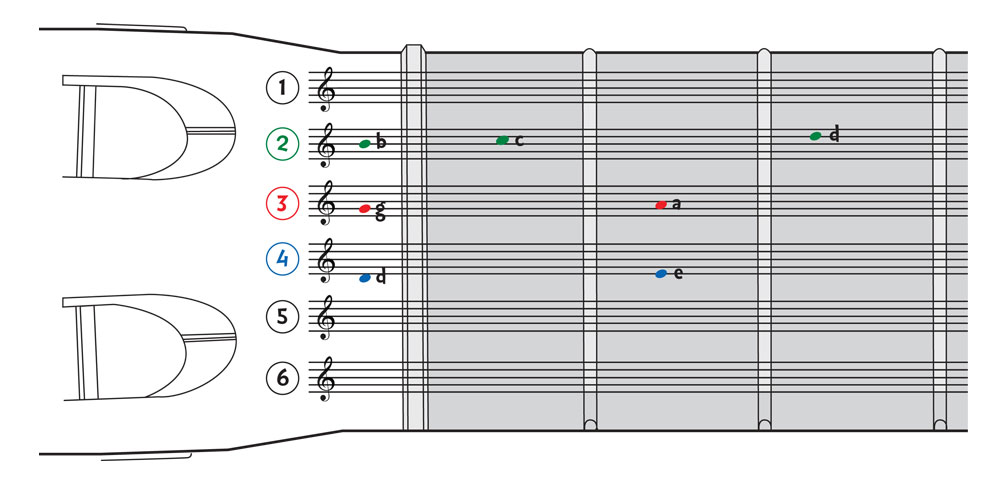FAQ for guitar teachers
What are the note ranges of the Rainbow Guitar books?
Book 1 starts with tunes on open strings D, G and B. Fretted notes on those strings are added gradually. By the end of the book, the note range is DE, GA, BCD.

By the end of Book 2 the pupil has met all the notes up to fret 3, on all six strings:

The notes are introduced in the same order in the online materials. Groups 1 – 5 correspond to learning stages in Book 1, and Groups 6 – 12 correspond to Book 2.
What is the approach to the right hand?
There are so many approaches to the right hand in guitar playing, and therefore also in guitar teaching. In many ways, I think a guitar beginner book should simply present the notes in a logical order, and leave everything else in the hands of a good teacher.
However, there are illustrations in the Rainbow Guitar books and they do sketch out an approach which works for me with younger pupils. In Book 1, all the music can be plucked with the thumb while resting fingertips on string 1 – but many of the pieces could just as well be plucked with alternating i and m fingers. In Book 2, the right hand fingers are introduced, with im alternation and eventually broken-chord patterns with “pima”. Nothing is said explicitly about “free strokes” and “rest strokes” – this is left up to the teacher. All the music in these books could also be learned with a plectrum.
The online materials do not have illustrations as such. Some of the pieces are linked to video files, which are played fingerstyle using free strokes.
What about guitar chords?
Pupils are so different when it comes to chord playing. Some are ready, willing and able to play chords almost from Day 1. Others really struggle to make a good sound with chords for the first couple of years – these pupils will do better if they focus on melody to begin with and build strength and co-ordination in their fingers as they do so.
In general, the Rainbow Guitar materials try to leave it entirely up to the teacher or pupil when to introduce chords, and how much chord work to do. If it suits the pupil, you can work right through the materials without needing to play chords at all.
Rainbow Guitar Book 1 does not include any instructions for chords. Accompaniments are generally played on single strings (roots of chords) or on pairs of strings in alternation.
Rainbow Guitar Book 2 includes chord symbols above many of the pieces – these are very small and light so as not to distract the pupil from reading the notes. Written accompaniments gradually start to use more ambitious broken-chord patterns. There is a page near the back of the book with diagrams of the standard open position chord shapes on the guitar.
In the online materials, chord symbols are generally placed in a separate Part, which is hidden by default but can be displayed if required.